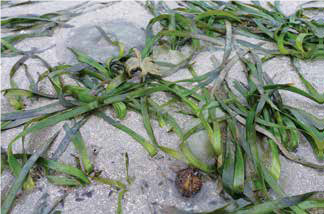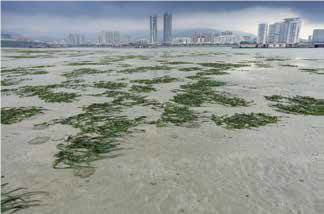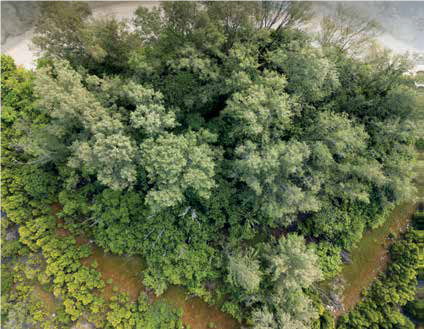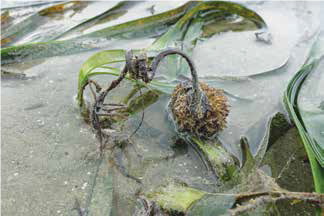The Unique Wonders of Penang’s Marine Garden
By Zulfigar Yassin
FEATURE
WHAT ARE SEAGRASS meadows? These are natural marine habitats found in shallow waters that support a large diversity of living communities, the most prominent of which is the seagrass.
These salt-tolerant plants flourish on sea beds and are known to flower seasonally, like terrestrial plants. At low tide, one is able to glimpse their wide coverage of the meadow, populated by shellfish, marine algae, worms and benthic (bottom living) animals and plants. But as the tide rises, the meadow becomes a feeding ground for crabs, prawns, marine fishes and mammals, e.g. dolphins, sea otters and in some places, even dugongs!

There are about 72 known seagrass species; the richest of which are around the coasts of Southeast Asia. The fish species found here number in the thousands, and is complemented by a larger number of invertebrates (worms, sponges, clams, etc.). In fact, the Straits of Malacca was once home to large tracts of seagrass meadows that provide shelter for marine mammals to breed, and protection for their young. But unfortunately, callous development continues to dwindle the size and distribution of these ecosystems.
Today, the only significant seagrass meadow along the Straits is found in Penang. It sits on a strip of often-submerged land known as the Middle Bank (Tebing Tengah), just east of the Jelutong waterfront. This bank stretches from the Port of Penang to the north down to Batu Uban in the south, running almost parallel to the Island’s shoreline.

Between January to March, when the tides are at their lowest, the Middle Bank can be visibly seen. The area next to the first Penang Bridge and where the bank is elevated, forms the island of Pulau Gazumbo, so named by scientists and fisherfolks after a reference in the famed P. Ramlee film “Panggilan Pulau” (1954). This small island is mostly waterlogged, with flood tides inundating its centre. Casuarina trees ring its perimeter and to its south is a small mangrove stand.
Seagrass as Eco-engineers

Marine ecosystems of coral reefs and mangroves are increasingly vulnerable against climate change threats. It is expected that half of Southeast Asia’s coral reefs will be lost during the lifetime of the next generation. The mangroves may fare slightly better, but not by much.
Seagrass though can weather this crisis. Through its creeping roots, high concentrations of carbon dioxide emissions are absorbed from the atmosphere and locked underground. This bioengineering feat is believed to be 20 times more efficient than carbon sequestration of tropical rainforests.
At the Middle Bank, the seagrass extends their creeping root system underwater to bind the soil, stabilise the bank and prevent erosion to Penang’s shoreline, deep-water channels and ports.

These double as biofilters as well; imagine the dark waters extruding from Sungai Pinang and from other channels of Penang’s waterfront. Passing through the meadows of the Middle Bank, the seagrass and algae here are able to filter and remove unwanted pollutants and nutrients from the waters. Admittedly, some of these are not good for the plants but the effect is clear; the liberated discharge will be cleaner before it enters the open sea.
The seagrass beds of the Middle Bank are particularly rich; both species of horseshoe crab breed on the shore at Pulau Gazumbo and humpback dolphins are often spotted playing nearby. But alas, like many unprotected denizens of the Middle Bank, clams and mussels are foraged by locals during low tide. Flower crabs are enticed by the small baited tangkul, square nets that are stretched across wide frames; and long lines dipped into the water to hook prevailing skates.

The Middle Bank has been a backdrop to Penang’s maritime tradition and is in great need of protection. As the poet Derek Walcott eloquently reminds us:
Where are your monuments, your battles, martyrs?
Where is your tribal memory? Sirs,
in that gray vault. The sea. The sea
has locked them up. The sea is History.
Zulfigar Yassin

is a marine environmental scientist who is an Honourable Professor at Universiti Sains Malaysia and a Visiting Senior Analyst at Penang Institute. His work now focuses on the sustainable development of the marine environment.



